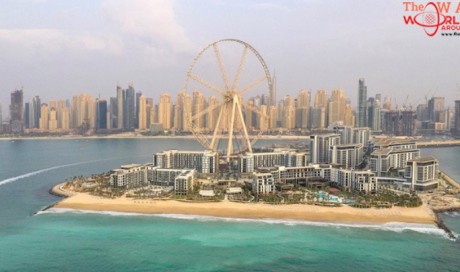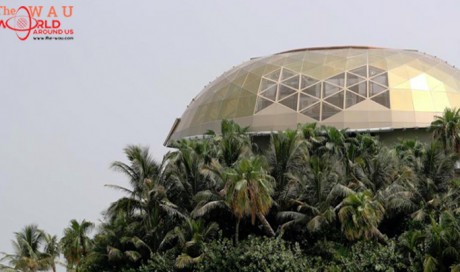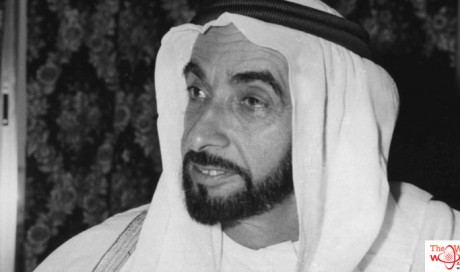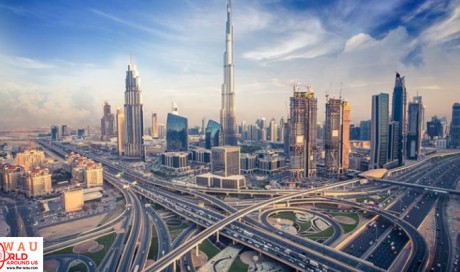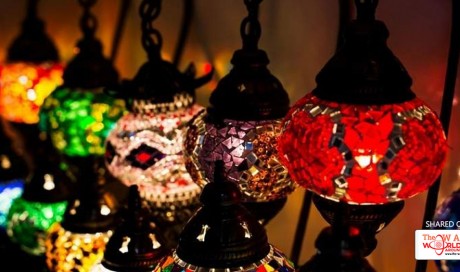History and Ethnic Relations
Emergence of the Nation. Before 1971 the seven emirates were collectively known as the Trucial States, a name that originated from maritime agreements between the British and the leading sheikhs of the tribes inhabiting the southern coast between Qatar and Oman in the first half of the nineteenth century. The economic life of the UAE depended heavily on pearl diving and sea trade in the Gulf and the Indian Ocean. This led to the settlement of different ethnic groups from countries along the trade routes, such as Iran and India. Trade activities with east Africa led to the importation of Africans as laborers in the pearling industry in the late nineteenth century. The African and Iranian ethnic populations have been fully integrated as citizens.
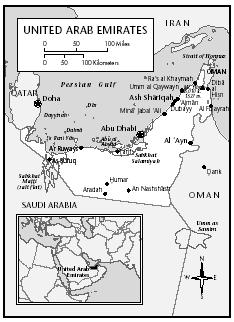
Urbanism, Architecture, and the Use of Space
Before 1960, the only settlements were small towns and villages. Oil resources have enabled massive modernization. Towns have been transformed from mud-walled communities into commercial capitals integrated in the global economy. Because of the small population and harsh desert interior, 80 percent of the population lives in the coastal capital cities, leading social scientists to describe them as city-states.
Urbanization has been characterized by unparalleled growth. Abu Dhabi is one of the most modern cities in the world. UAE cities have been heavily influenced by the global city type. Dominant urban features include skyscrapers in the commercial city centers, multistory residential buildings, large shopping malls, wide boulevards, an extensive network of highways, and sprawling new suburbs.
The cities have a multiethnic composition, with segregated housing areas for nationals and the immigrants. Housing is subdivided further according to class, social power, ethnicity, and nationality.
To create a balance between their global and local aspects, in municipalities have adopted policies projecting Arab-Islamic architectural design, particularly arched windows, gates, and decorative stucco. Recently, more urban settings have exhibited decorative designs with local themes related to the national heritage. Preservation of the urban heritage also is seen in the renovation of old forts, palaces, souks (marketplaces), and mosques. Date palm trees, symbols of the local culture, have been planted extensively along city roadsides.
Food and Economy
Food in Daily Life. Before the 1960s, food consisted mainly of fish, rice, bread, dates, yogurt, homegrown vegetables, and meat from sheep, goats, and camels. The diet has improved in quality and variety, with modern supermarkets offering imported foods.
Lunch is the main family meal and is eaten at home at around two o'clock. It usually consists of fish, rice, meat, and a vegetable dish. Many Emiratis prefer the traditional style of eating with the right hand. There are strict Muslim taboos against pork and alcohol, and meat must be slaughtered according to the Islamic halal method.
Emiratis are known for their hospitality; they feel honored when receiving guests and socializing with friends and relatives. Guests are welcomed with coffee and fresh dates. Incense is passed around so that guests can catch the fragrance in their headwear. With the immigrant population have come restaurants offering a wide variety of ethnic foods, and fast-food restaurants have also become popular.
Basic Economy. Income is among the highest in the world, but there are large differences between the emirates, with Abu Dhabi, Dubai, and Sharjah producing the most oil. The other emirates have benefitted from oil wealth through the federal welfare system and employment in state institutions.
With declining oil prices, the government has attempted to diversify the national economy. This has led to the growth of industry, construction, commerce, free trade zones, transportation, tourism, farming, fisheries, and communications. The rapid development of these sectors has reduced the nation's dependence on oil. In 1998, the gross domestic product was estimated at $45,590 million, 70 percent from the nonoil sector.
The national currency name is called the Emirian Dirham.
Major Industries and Trade. The UAE is the third largest exporter of crude oil and gas in the Gulf. It is a member of the Organization of Petroleum Exporting Countries (OPEC).
Division of Labor. Citizens account for 10 percent of the total labor force. Almost all nationals (99 percent) work in the state sector because of the attractive benefits and are employed mainly in nontechnical jobs in education, the army, the police, and the civil service. They also own all Emirati businesses. Immigrants are employed in both the public and private sectors in manual, technical, and professional occupations.
Social Stratification
Classes and Castes. Emirati society is divided into two social categories: the nationals ( Al-Muwateneen ) and the foreign immigrants, referred to as the incomers ( Al-Wafedeen ). Citizens are subdivided into four main social classes: (1) the ruling sheikhly families, whose members hold the highest political positions and power and have immense wealth and prestige, (2) the merchant class, known as al-tujjar , traditionally pearling merchants who now sell international consumer goods, (3) the new middle class, represented by increasing numbers of professionals who have benefitted from free state education, and (4) the low-income groups, represented by newly settled Bedouin nomads and former pearl divers and oasis farmers.
Among the immigrants there are hierarchical groups that receive different economic and social rewards: (1) top professionals and technocrats with international contracts, who earn high salaries and other benefits, (2) middle-range professionals such as school teachers, skilled technicians, and company salesmen, and (3) low-paid semi-skilled and unskilled workers, primarily Asian. In general, nationals are a privileged minority, and benefit from state laws and business regulations.
Symbols of Social Stratification. The symbol of a male national as a distinct social category is seen most visibly in the traditional dress of a white robe ( kandoura ) and white head cloth ( ghutrah ) with a black rope ( aqal ). Men grow short beards and mustaches.Women wear long dresses with a head cover ( hijab ) and black cloak ( abayah ).
...[ Continue to next page ]
Share This Post

